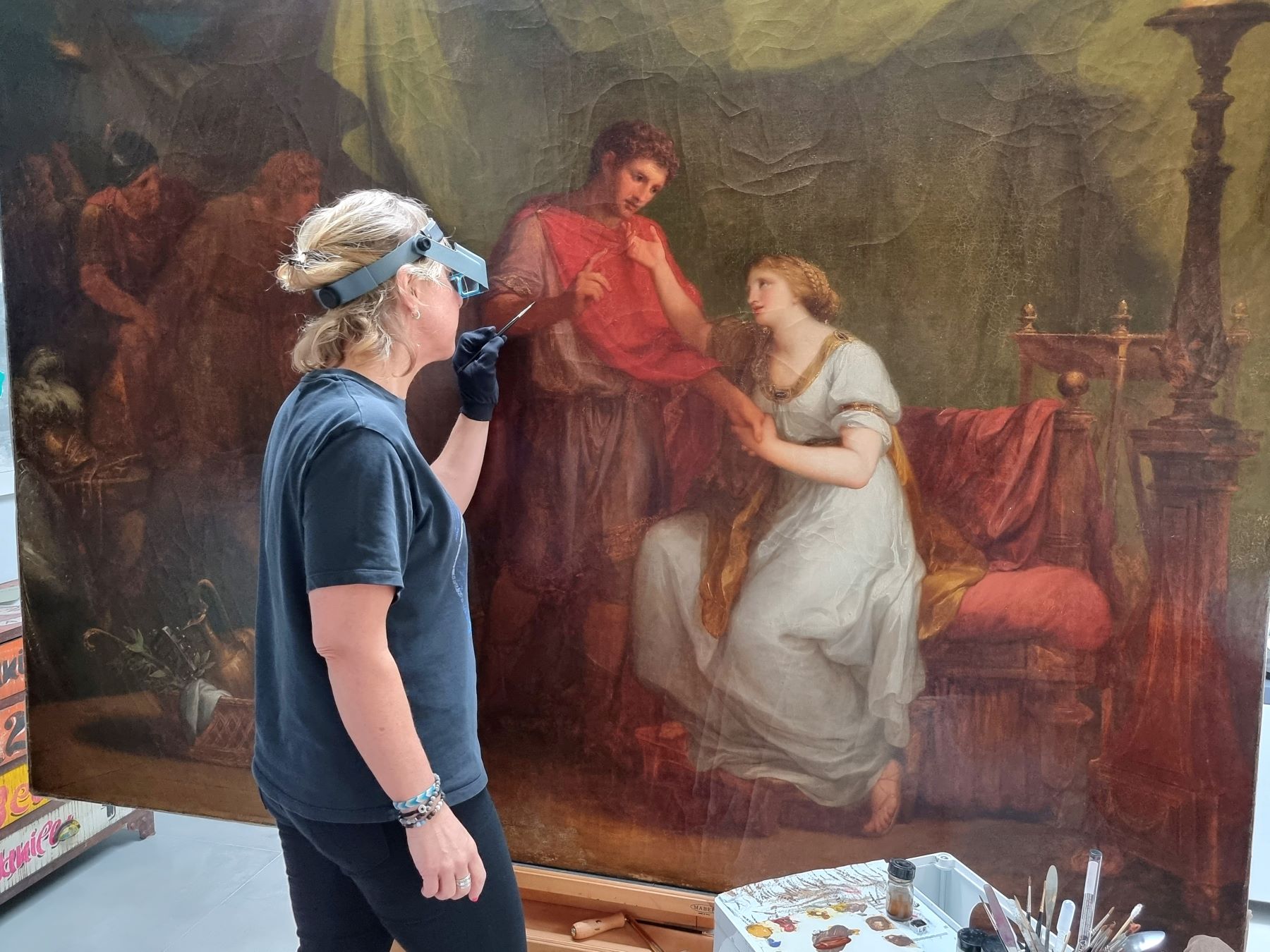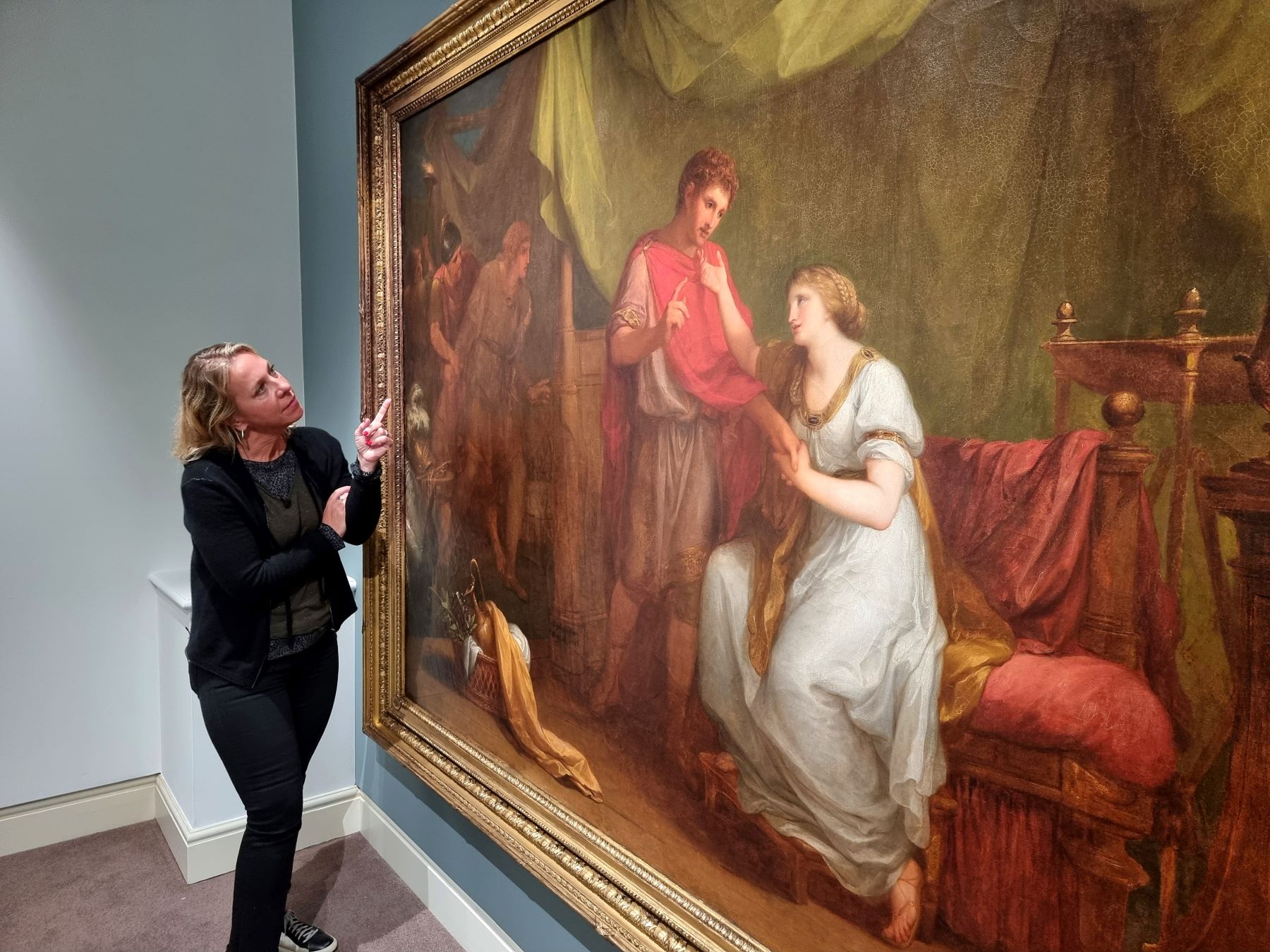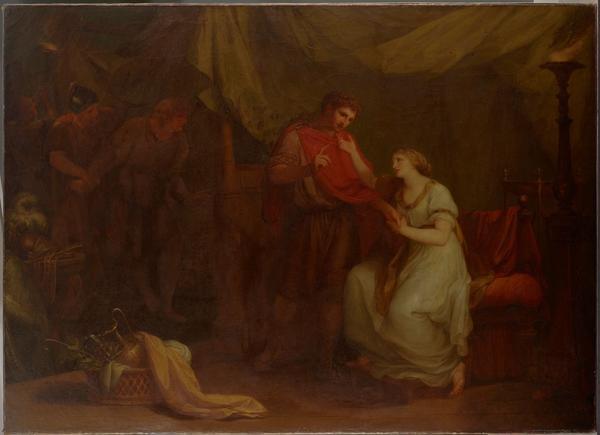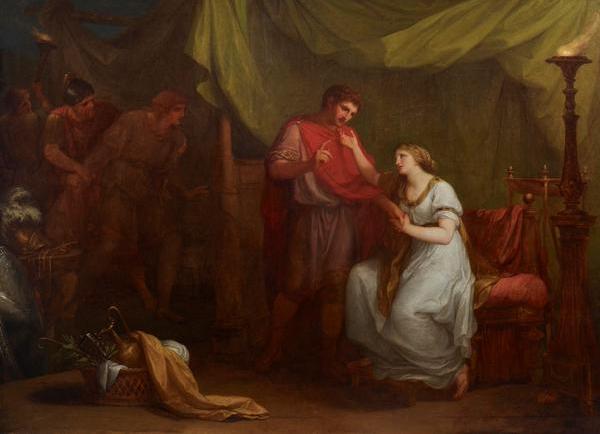Restoring Angelica Kauffman's Vision for Diomedes and Cressida

Diomedes and Cressida is an 18th-century artwork by Angelica Kauffman (1741 - 1807) and forms part of the National Trust's Petworth House collection. It recently underwent conservation alongside its original neoclassical frame. Find out more about the frame conservation here. Now, let's dive into the significance and the fascinating intricacies of conserving the artwork.

Swiss-born artist Angelica Kauffman was renowned for her portraits, historical scenes, and depictions of classical mythology. A co-founding member of the Royal Academy of Arts, she received wide recognition during her lifetime. Her work is characterised by its elegance, clarity, and emotional depth, blending the ideals of the Enlightenment with a refined neoclassical aesthetic. Her legacy includes dozens of paintings, with Diomedes and Cressida being one important part of it.
The painting depicts a scene from Shakespeare's play Troilus and Cressida. The story of Troilus and Cressida is a tragic tale of love set against the backdrop of the Trojan War. Troilus is a Trojan prince in love with Cressida. Cressida initially reciprocates Troilus' love but later becomes involved with the Greek warrior Diomedes, after she is traded to the Greeks in exchange for a Trojan prisoner, leaving Troilus devastated. The dramatic moment when Troilus overhears Cressida promising herself to Diomedes is rendered by Kauffman. The painting captures the tension between personal desires and the demands of honour.
Icon Member Sophie Reddington ACR, an independent painting conservator shared her experience with us:
'My work on the project began with the visits to assess the painting in the North Gallery at the Petworth House. Unfortunately, after the special surveys were carried out together with the NT’s ‘Senior National’ team it was identified that the painting’s condition deteriorated significantly over the last 15 years. Conservator Rebecca Hellen and Petworth curator Emily Knight were keen to collaborate with me, and the preventive conservation teams have increased knowledge about the environmental conditions there now too.
The biggest concern for me at that stage was about the cupping paint and very pronounced craquelure. It was a classic country house challenge to assess the condition of the paint layers in situ. The old varnish was very thick and opaque even in UV light. NT conservation records suggested the painting was unlined, so confirming that was a thrill.
Diomedes and Cressida had been strip-lined by the Hamilton Kerr Institute in 1989 and it was great to see that this strip-lining was still in excellent condition. Rebecca Hellen and I discussed the higher number of earlier unlined paintings that exist across NT collections – a reflection of many pictures being commissioned or bought early into houses and not ending up going through treatment and lining cycles from being sold and resold.
Treatment was a challenge too. I removed the thick varnish layers slowly in stages, still unsure if varnish reduction or a full cleaning would work best for such a large complex painting. Having recently worked on the Death of Cardinal Beaufort by Joshua Reynolds which he painted at the same time as Angelica Kauffman for Boydell's Shakespeare Gallery, I was expecting the worst.
There were drying cracks throughout, some deeper and wider than others with the ground protruding or showing from underneath. The original paint layers turned out to be heavily overpainted. I uncovered a peculiar shrinkage pattern which may have originated from early cleaning damage, or a more eccentric drying defect than usually found in 18th-century modified paint. This discovery was one of my biggest challenges because I needed to find a way to avoid overpainting again like my predecessor but also pull the composition together with minimal retouching.
Another important aspect was the surface. I started building up layers of spray varnish early on over a lengthy period with time in between sprays, to create the best possible surface which would integrate the retouching and at the same time keep the viewer's eye away from the craquelure, which although reduced was not completely gone.
Radek Chocha came to help me consolidate the paint locally: we first took the canvas off the stretcher, then removed an old degraded loose lining, and re-stretched the canvas onto its stretcher, which was not original. Andrew Greenway, a freelance paintings conservation technician, has applied beautifully crafted foam core ‘insert panels’ to support the unlined and large canvas. Within days I could see the paint relax and settle down further – a combination of being released from many varnishes and overpaint layers and having support from the reverse. The most enjoyable fact was that I was working on an unlined painting. We rarely encounter them anymore especially when working on larger paintings. I also put my heart and soul into this intense project trying to bring the painting back to life. It has a special significance to me as it is one of only two paintings by female artists in Petworth’s collection.'
If you would like to visit Petworth House and see the conserved Diomedes and Cressida for yourself, please visit the National Trust website here.

Text: Sophie Reddington ACR and Rebecca Hellen ACR
We thank Sophie Reddington, Rebecca Hellen, and the National Trust for providing the information and images for this article.


